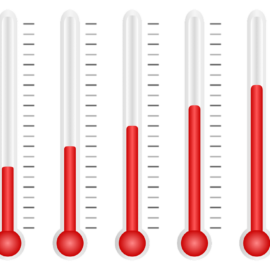
The quickest way to cut global warming? Cut methane use. This is what a new UN report advises.
If human-caused methane emissions are cut by nearly in half by 2030, a half degree (0.3 degrees Celsius) of warming can be prevented by mid-century, according to Thursday’s report by the United Nations Environment Programme. The report said the methane reduction would be relatively inexpensive and could be achieved — by plugging leaks in pipelines, stopping venting of natural gas during energy drilling, capturing gas from landfills and reducing methane from belching livestock and other agricultural sources, which is the biggest challenge. Because methane helps make smog, cutting annual emissions of the gas by 45% or nearly 200 million tons (180 million metric tons) could potentially prevent about 250,000 deaths a year worldwide from pollution-triggered health problems, the U.N. said. “It is absolutely critical that we tackle methane and that we tackle it expeditiously,” United Nations Environment Programme Director Inger Andersen said Thursday.
apnews.com
The easiest way to meet the goals of the 2015 Paris climate agreement is to cut methane. This would be short term help for the long term goal because while methane is more potent than carbon dioxide it degrades faster.
Methane only lasts a dozen years in the air while carbon dioxide sticks around for centuries. Per molecule, methane traps dozens of times the heat of carbon dioxide. There is 200 times more carbon dioxide in the air than methane. “If you think we are close to climate tipping points, methane cuts are a way to quickly reduce warming,” said Breakthrough Institute climate director Zeke Hausfather.
A large part of the methane in the air now is from leaks. The administration is working on new regulations to control leakage. Study lead author Drew Shindell, a Duke University Earth sciences professor commented on the topic.
Shindell said satellites are showing massive energy-related leaks, especially in the United States and Russia. “People are realizing that there is a lot more methane,” he said. “There’s a lot more of it that is coming from things that we know we actually have control over and can do something about.” About 60% of the methane comes from human activity, the rest from wetlands and other natural sources, the report said. Of the man-made methane, about 35% escapes from drilling and transport of natural gas and oil, 20% seeps out of landfills and 40% comes from agriculture, mostly livestock. The natural gas that escapes has worth so capturing it from energy production and landfills makes financial sense, scientists say. “I think of every methane leak as an invisible stream of tiny dollar signs,” said Stanford University environmental studies director Chris Field.
Cutting food waste and improving how livestock is fed will save a lot of the methane now emitted. Even though the natural release is less than human causes, James Butler and three other scientists who study methane emissions for the U.S. National Oceanic and Atmospheric Administration fear that climate change will cause the earth to warm and a warming earth releases more methane naturally.
We all have a part to play.



